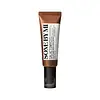What's inside
What's inside
 Key Ingredients
Key Ingredients

 Benefits
Benefits

 Concerns
Concerns

 Ingredients Side-by-side
Ingredients Side-by-side

Galactomyces Ferment Filtrate
HumectantGlycerin
HumectantCetyl Ethylhexanoate
EmollientPropanediol
SolventDicaprylyl Carbonate
Emollient1,2-Hexanediol
Skin ConditioningBetaine
HumectantCetearyl Alcohol
EmollientPolyglyceryl-10 Laurate
Skin ConditioningMethyl Trimethicone
Skin ConditioningSilica
AbrasiveCetearyl Olivate
Panthenol
Skin ConditioningPhenyl Trimethicone
Skin ConditioningPotassium Cetyl Phosphate
EmulsifyingWater
Skin ConditioningSorbitan Olivate
EmulsifyingBisabolol
MaskingAmmonium Polyacryloyldimethyl Taurate
Emulsion StabilisingHydroxyethyl Acrylate/Sodium Acryloyldimethyl Taurate Copolymer
Emulsion StabilisingDipropylene Glycol
HumectantSqualane
EmollientLaminaria Japonica Extract
Skin ProtectingEclipta Prostrata Leaf Extract
Skin Conditioning3-O-Ethyl Ascorbic Acid
Skin ConditioningGlutathione
Ethylhexylglycerin
Skin ConditioningParfum
MaskingLavandula Angustifolia Oil
MaskingCoptis Japonica Root Extract
Skin ConditioningXanthan Gum
EmulsifyingButylene Glycol
HumectantAdenosine
Skin ConditioningFructooligosaccharides
HumectantSorbitan Isostearate
EmulsifyingT-Butyl Alcohol
PerfumingHydrogenated Lecithin
EmulsifyingBeta-Glucan
Skin ConditioningHydrolyzed Hyaluronic Acid
HumectantAscorbic Acid
AntioxidantTocopherol
AntioxidantAllantoin
Skin ConditioningCeramide NP
Skin ConditioningOryza Sativa Bran Oil
EmollientOryza Sativa Bran Extract
Skin ConditioningGlyceryl Stearate
EmollientPhytosphingosine
Skin ConditioningCholesterol
EmollientCeramide AP
Skin ConditioningCeramide As
Skin ConditioningCeramide Ns
Skin ConditioningCaprylyl Glycol
EmollientCeramide Ng
Skin ConditioningCeramide EOP
Skin ConditioningLinalool
PerfumingLimonene
PerfumingGalactomyces Ferment Filtrate, Glycerin, Cetyl Ethylhexanoate, Propanediol, Dicaprylyl Carbonate, 1,2-Hexanediol, Betaine, Cetearyl Alcohol, Polyglyceryl-10 Laurate, Methyl Trimethicone, Silica, Cetearyl Olivate, Panthenol, Phenyl Trimethicone, Potassium Cetyl Phosphate, Water, Sorbitan Olivate, Bisabolol, Ammonium Polyacryloyldimethyl Taurate, Hydroxyethyl Acrylate/Sodium Acryloyldimethyl Taurate Copolymer, Dipropylene Glycol, Squalane, Laminaria Japonica Extract, Eclipta Prostrata Leaf Extract, 3-O-Ethyl Ascorbic Acid, Glutathione, Ethylhexylglycerin, Parfum, Lavandula Angustifolia Oil, Coptis Japonica Root Extract, Xanthan Gum, Butylene Glycol, Adenosine, Fructooligosaccharides, Sorbitan Isostearate, T-Butyl Alcohol, Hydrogenated Lecithin, Beta-Glucan, Hydrolyzed Hyaluronic Acid, Ascorbic Acid, Tocopherol, Allantoin, Ceramide NP, Oryza Sativa Bran Oil, Oryza Sativa Bran Extract, Glyceryl Stearate, Phytosphingosine, Cholesterol, Ceramide AP, Ceramide As, Ceramide Ns, Caprylyl Glycol, Ceramide Ng, Ceramide EOP, Linalool, Limonene
Water
Skin ConditioningDiglycerin
HumectantGlycerin
HumectantTranexamic Acid
AstringentButylene Glycol
HumectantPEG-8
HumectantPEG-6
HumectantPEG-32
HumectantPPG-24-Glycereth-24
EmulsifyingMethylparaben
PreservativeCarbomer
Emulsion StabilisingPolysorbate 20
EmulsifyingStyrene/Vp Copolymer
Disodium EDTA
Hydrolyzed Hyaluronic Acid
HumectantMagnesium Ascorbyl Phosphate
AntioxidantTocopherol
AntioxidantSodium Hyaluronate
Humectant
 Reviews
Reviews

Ingredients Explained
These ingredients are found in both products.
Ingredients higher up in an ingredient list are typically present in a larger amount.
Butylene Glycol (or BG) is used within cosmetic products for a few different reasons:
Overall, Butylene Glycol is a safe and well-rounded ingredient that works well with other ingredients.
Though this ingredient works well with most skin types, some people with sensitive skin may experience a reaction such as allergic rashes, closed comedones, or itchiness.
Learn more about Butylene GlycolGlycerin is already naturally found in your skin. It helps moisturize and protect your skin.
A study from 2016 found glycerin to be more effective as a humectant than AHAs and hyaluronic acid.
As a humectant, it helps the skin stay hydrated by pulling moisture to your skin. The low molecular weight of glycerin allows it to pull moisture into the deeper layers of your skin.
Hydrated skin improves your skin barrier; Your skin barrier helps protect against irritants and bacteria.
Glycerin has also been found to have antimicrobial and antiviral properties. Due to these properties, glycerin is often used in wound and burn treatments.
In cosmetics, glycerin is usually derived from plants such as soybean or palm. However, it can also be sourced from animals, such as tallow or animal fat.
This ingredient is organic, colorless, odorless, and non-toxic.
Glycerin is the name for this ingredient in American English. British English uses Glycerol/Glycerine.
Learn more about GlycerinHydrolyzed Hyaluronic Acid is a form of hyaluronic acid. It is created by the hydrolysis of hyaluronic acid with a high molecular weight. Once created, Hydrolyzed Hyaluronic Acid has a low molecular weight.
Low molecular weight HA has been shown to hydrate and increase elasticity of the skin. Increasing elasticity is also associated with reduction of wrinkle depth.
One study found topical low molecular weight hyaluronic acid may be considered for the treatment of rosacea in the adult population. However, we always recommend speaking with a professional about your skin concerns.
Hyaluronic acids are a humectant. This means they draw moisture from the air. Hyaluronic acids help moisturize, soothe, and protect the skin.
Read more about other common forms of hyaluronic acid:
Learn more about Hydrolyzed Hyaluronic AcidTocopherol (also known as Vitamin E) is a common antioxidant used to help protect the skin from free-radicals and strengthen the skin barrier. It's also fat soluble - this means our skin is great at absorbing it.
Vitamin E also helps keep your natural skin lipids healthy. Your lipid skin barrier naturally consists of lipids, ceramides, and fatty acids. Vitamin E offers extra protection for your skin’s lipid barrier, keeping your skin healthy and nourished.
Another benefit is a bit of UV protection. Vitamin E helps reduce the damage caused by UVB rays. (It should not replace your sunscreen). Combining it with Vitamin C can decrease sunburned cells and hyperpigmentation after UV exposure.
You might have noticed Vitamin E + C often paired together. This is because it is great at stabilizing Vitamin C. Using the two together helps increase the effectiveness of both ingredients.
There are often claims that Vitamin E can reduce/prevent scarring, but these claims haven't been confirmed by scientific research.
Learn more about TocopherolWater. It's the most common cosmetic ingredient of all. You'll usually see it at the top of ingredient lists, meaning that it makes up the largest part of the product.
So why is it so popular? Water most often acts as a solvent - this means that it helps dissolve other ingredients into the formulation.
You'll also recognize water as that liquid we all need to stay alive. If you see this, drink a glass of water. Stay hydrated!
Learn more about Water